TUCSON, ARIZ. (KGUN) — Southern Arizona offers a wide variety of weather throughout the year and will be sure to satisfy the likes of those who enjoy spending time outdoors!
With nearly 300 days of sunshine per year, southern Arizona provides plenty of opportunity to enjoy some time under the beautiful cobalt blue skies that often give way to nearly unlimited visibility. From hiking to golf to lounging by the pool and everything between, you’ll likely find yourself looking for any excuse to get outside!
Southern Arizona is known for its heat, but we also see our share of chilly temperatures. In Tucson, the hottest temperatures occur in the month of June when highs climb just over 101°. Average highs fall all the way to just over 65° by the time we reach our coolest time of the year in December.

Average low temperatures vary quite a bit throughout the year. During the summer, heat combines with higher humidity to keep overnight lows quite warm. In Tucson, the warmest nights tend to occur in July when average lows only drop to just over 76°. By December, crisp air from the north combines with low humidity to bring average low temperatures down to slightly above 40°.
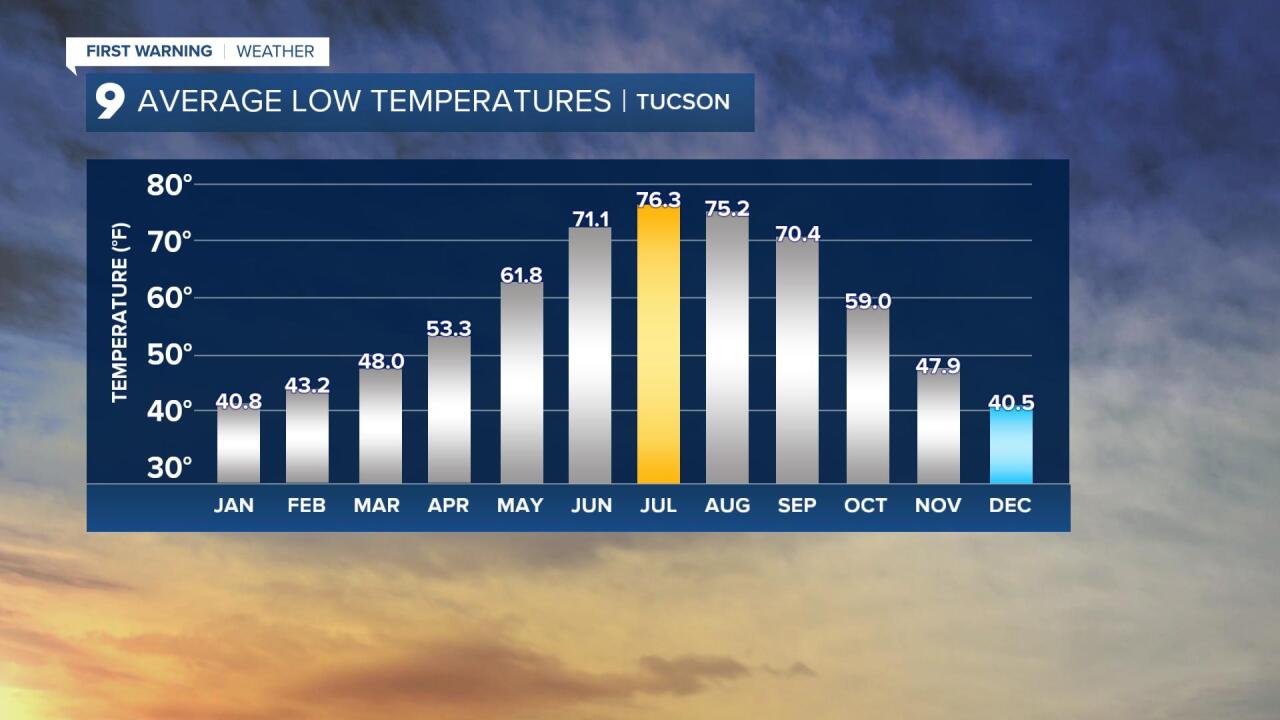
Southern Arizona is part of the Sonoran Desert and our lack of rain certainly reflects where we live. In Tucson, our average annual rainfall amounts to just over 10.5” per year! We have a couple of times a year that are most favorable for rain. One is during the winter months and the other is during monsoon. In fact, monsoon generally brings over half our average annual rainfall to Tucson.
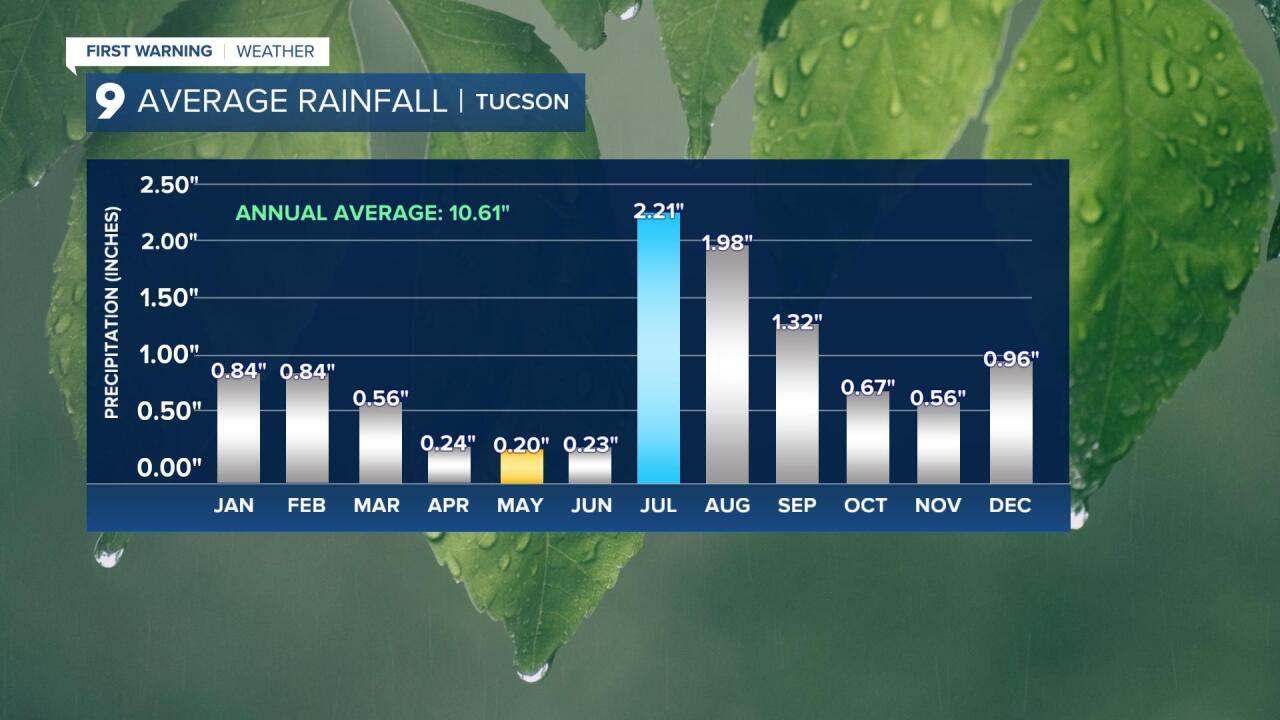
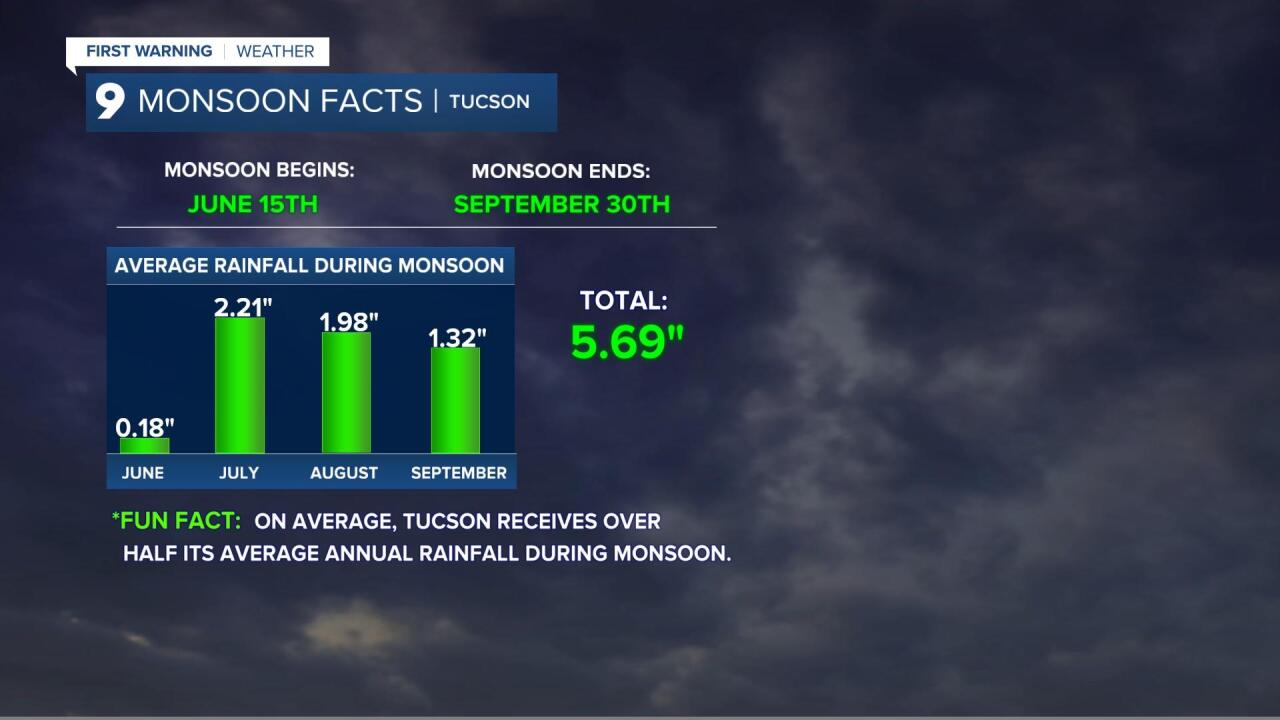
Most of the year, the wind isn’t too much of a factor. However, there are days when the wind causes issues with blowing dust and creates some damage when associated with strong monsoon thunderstorms. Outside of monsoon, our strongest wind tends to occur when powerful cold fronts sweep across southern Arizona when we’re making the transition from winter to spring.
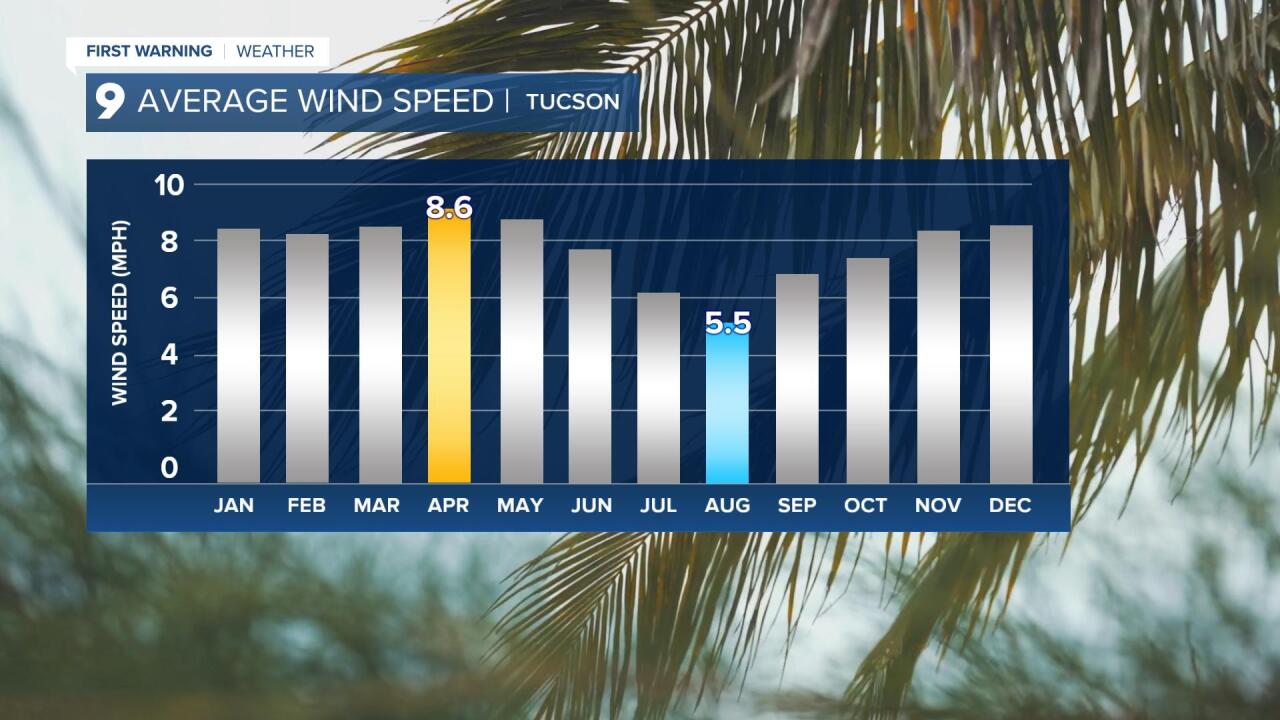
Southern Arizona is also known for dust devils! Heat rises from the ground and mixes with a breeze to create a whirlwind of dust and debris. Most of the time, dust devils come and go without causing any harm. There are times, though, when these vigorous columns of rotating wind get strong enough to rip roofs off of carports, cause damage to tile roofs and even rip apart small sheds!
One thing that is a major factor is the heat. We have to remember, we live in a desert and it will get hot! Of course, the old joke is that it’s a dry heat! Nonetheless, our summer heat should not be taken lightly. On average, Tucson sees the mercury climb above 100° on 68 days out of the year.

Records of the weather have been kept in Tucson since 1895. Since then, the hottest temperature ever recorded was 117° back in June of 1990. It is not unusual for the mercury to climb up to 110°, but it’s pretty rare that we see temperatures climb over 112°. This may seem sizzling hot, but we’ll leave the hottest temperatures to the folks in Death Valley, California. According to the World Meteorological Organization, the hottest temperature ever recorded on Earth occurred on July 10, 1913 at Greenland Ranch where a scorching 134° reading was recorded!
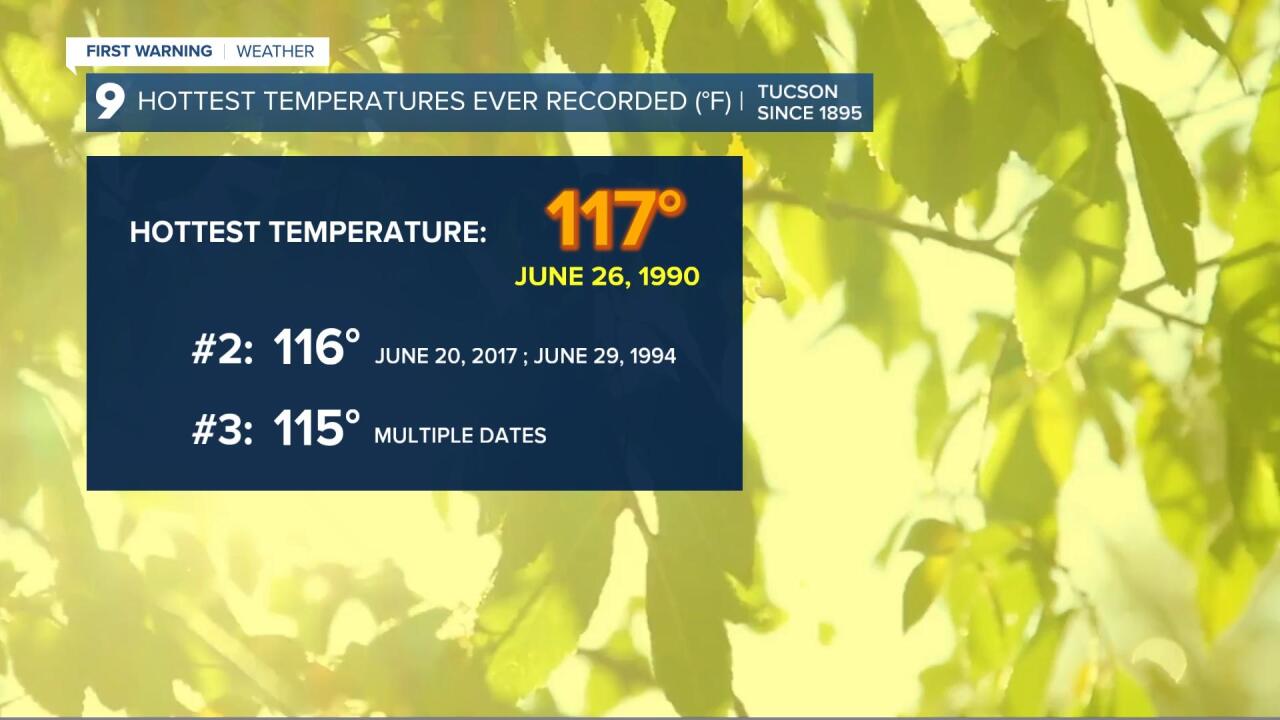
It’s not all about sunshine and heat in southern Arizona. We are known for some pretty chilly weather during the winter months and even into early spring. Winter in the desert is nothing like what our friends around much of the country experience, but we do get enough wintry weather to make us appreciate those warm spring days that lead into summer.
We do see our temperatures drop below freezing from time to time. In Tucson, since we’re at a slightly lower elevation of just below 2,500’, our first freeze doesn’t usually occur until the first part of December. Other communities, especially to the south and east of Tucson, experience freezing temperatures a bit earlier in the season because of their higher elevation.

By the time we get through winter, in Tucson, we typically see 12 nights where the temperature drops below freezing. In the metro area, our last freeze generally occurs the first week of February. However, it’s not unusual to see a light freeze all the way into March or April. Back in 1899, Tucson’s last freeze of the season didn’t occur until May 3rd!
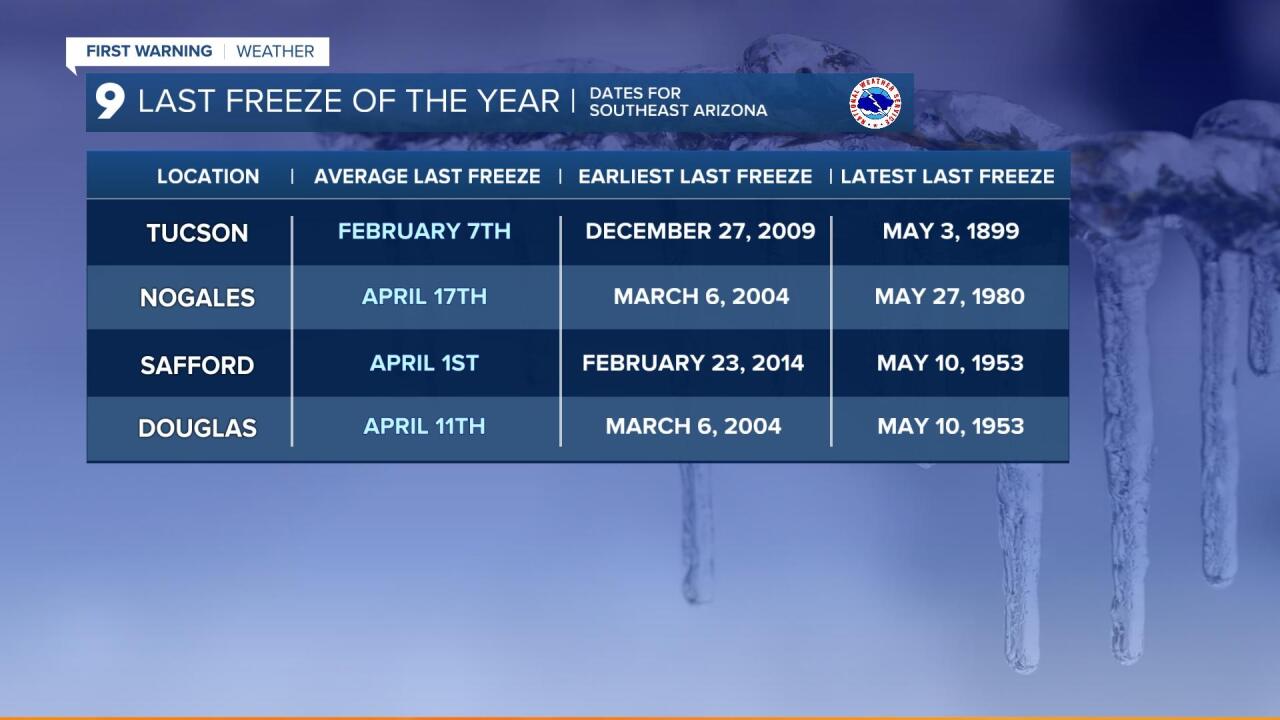
In Tucson, we have seen the mercury drop way below freezing on several occasions. To date, the coldest temperature ever recorded was a bitter cold 6° in early January of 1913. Now that’s cold! Fortunately, in Tucson, we don’t often record temperatures below 25°. That’s a good thing, because frozen pipes and devastating damage to local vegetation can prove quite costly.

Even though most folks don’t picture snowfall when they think of southern Arizona, we are known to see some snow every winter. In Tucson and to the west of the metro area, snow is pretty rare. There are many years where we never see a flake of snow, but several years have actually brought measurable snow to Tucson. Most of the time, the snow will stay confined to the mountains or to the higher valleys east and southeast of the city.
The most snow Tucson has ever seen in one day was on December 8, 1971 when nearly 7” of snow fell. The snowiest year occurred in 1987 when just over 8” of snow fell at the airport. One of Tucson’s more memorable snow events occurred April 4, 1999 which also happened to be Easter morning. Quite a surprise for those wishing to attend outdoor sunrise services!

We are lucky to live in such a beautiful place that brings such a wide variety of weather. Just when you think you can’t take another day of 100° heat, cool autumn nights arrive. About the time you’ve had it with cold winter nights, warm spring days return. We’re treated to a dazzling display of lightning when monsoon arrives for its annual visit and we are witness to incredible sunrises or sunsets throughout the year. Southern Arizona really is a special place when it comes to weather!
——-
Cuyler Diggs is a KGUN 9 Meteorologist. Cuyler has been forecasting the weather in southern Arizona since 2003. He has experience forecasting and covering all kinds of weather since becoming a weather anchor in 1996. Share your story ideas and important issues with Cuyler by emailing cuyler.diggs@kgun9.com or by connecting on Facebook and X.


